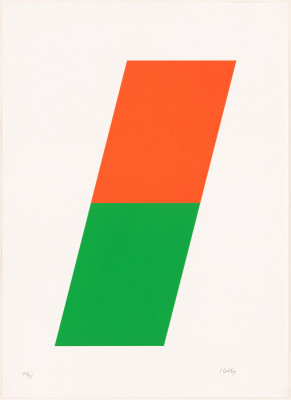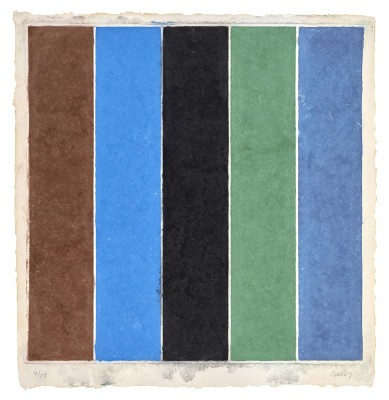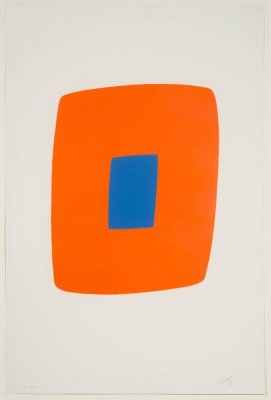About Ellsworth Kelly
American, 1923-2015
Ellsworth Kelly was born in Newburgh, New York, on May 31, 1923. He spent most of his childhood in Oradell, New Jersey. Encouraged by his teachers, Kelly started experimenting with painting and sculpture in elementary school.
In 1941, Kelly enrolled in the Pratt Institute in Brooklyn to study art. However, he was forced to leave school in 1943 to serve in the army during World War II. Kelly was stationed in Europe, where he was assigned to the Ghost Army, a camouflage unit that used inflatable tanks and other props to deceive the enemy.
After the war, Kelly returned to the United States and attended the School of the Museum of Fine Arts in Boston. In mid-to-late 1940's, he received a G.I. Bill scholarship to study in Paris. While in Paris, Kelly was influenced by the work of artists such as Henri Matisse, Pablo Picasso, and Jean Arp. He also became interested in Byzantine icons and primitive art.
Kelly's early work was figurative, but he soon began to experiment with abstraction. In the early 1950s, he developed a style of painting that he called "hard-edge painting." Hard-edge painting is characterized by its sharp, precise lines and flat areas of color. Kelly's paintings often feature simple, geometric shapes, such as circles, squares, and triangles.
In the late 1950s, Kelly began to create sculptures. His sculptures are often made of simple materials, such as steel, aluminum, and bronze. Like his paintings, Kelly's sculptures are characterized by their sharp lines and geometric shapes.
Kelly's work has been exhibited in museums and galleries around the world. He has had numerous solo retrospectives, including exhibitions at the Museum of Modern Art in New York, the Whitney Museum of American Art in New York, and the Solomon R. Guggenheim Museum in New York.





